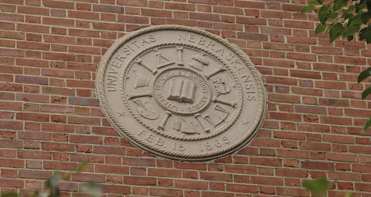
The University of Nebraska is taking a leading role in a four-part legislative proposal that would improve health care, drive workforce development and job creation, and create new opportunities for students in health fields across the Cornhusker state.
Announced by NU President James B. Milliken, state senators and other university leaders Jan. 18, the "Building a Healthier Nebraska" initiative seeks a $91 million investment from the state's cash reserves. The funds would support capital projects in Omaha, Lincoln and Kearney, and be leveraged with more than $300 million in additional support from private donors, patient revenues and other sources.
"Nebraska has an opportunity to make an investment now that will serve the people of the state well into the future," Milliken said. "Education and job creation are high priorities for Nebraska, and our proposal advances both. We are delighted that our partners in the Legislature are joining us to help build a stronger, more competitive Nebraska — which is a central part of our mission as the state's only public university.
"This initiative is an excellent example of how the public, education and private sectors can work together for the betterment of the state."
Building a Healthier Nebraska includes four components:
— A new University of Nebraska Medical Center College of Nursing facility in Lincoln. The facility would replace the current outdated one in downtown Lincoln, which is forced to turn away 60 percent of qualified applicants each year because of space limitations. Expanding education opportunities in nursing is key to workforce development in Nebraska; the state's nursing shortage is projected to reach 3,800 by 2020, with rural areas especially hard hit. The new $17 million facility would accommodate 314 students annually, compared to the current 250, and would allow faculty to expand their research activities. A new nursing division in Lincoln has been the university's priority capital request in the Legislature for the last two biennia. The Legislature in 2008 approved $87,500 in planning money for the new facility.
— Support for a cancer research tower at UNMC. The research tower would position UNMC to become one of only about 40 institutions in the nation to earn a Comprehensive Cancer Center designation from the National Cancer Institute. The 250,000-square-foot, 98-lab research tower would allow UNMC to add faculty, attract more grant funding, and locate all its cancer researchers in one facility. The Building a Healthier Nebraska initiative includes a $50 million request toward the $110 million cost of the cancer research tower, which is one part of a larger $370 million cancer center project at UNMC.
— A $19 million, 30,000-square-foot addition to the Bruner Hall of Science at the University of Nebraska at Kearney that would provide space for health sciences education programs, including expansion of the Kearney-based UNMC nursing division and the addition of UNMC allied health professions programs on the UNK campus. An expanded division would position annual enrollment to grow by 40 from the current 124, which would help address the critical shortage of nurses and nurse educators.
— $5 million to plan and design a new Veterinary Diagnostic Center at UNL's Institute of Agriculture and Natural Resources. The existing center was temporarily placed on provisional accreditation in 2007 by the American Association of Veterinary Laboratory Diagnosticians and is now in danger of being placed on provisional accreditation again because of shortcomings including obsolete infrastructure, overcrowding and poor ventilation. Planning funds would allow the university to demonstrate progress in correcting the deficiencies, while failure to make any progress likely would lead to loss of accreditation for the center.
Loss of accreditation would significantly impact Nebraska veterinarians and livestock producers who rely on the center for accurate, timely test results and information. Nebraska also could lose out on state and federal funding for regulatory and disease surveillance programs, and may struggle to recruit and retain excellent faculty and staff for the center and for IANR's professional program in veterinary medicine.
Leadership on the Building a Healthier Nebraska legislative package is by Sen. Galen Hadley of Kearney. Hadley also is introducing legislation for the Kearney project.
Legislation for the Lincoln nursing, cancer and veterinary diagnostics projects will be introduced by Sens. Tony Fulton, John Nelson and Tom Hansen, respectively.
"The Building a Healthier Nebraska proposal is aligned with some of the Board of Regents' highest priorities: providing quality academic opportunities for our students, achieving excellence in research and helping to build a talented workforce for Nebraska," said Bob Whitehouse, chairman of the NU Board of Regents. "I’m excited about the potential this proposal has to create a healthier, more economically competitive Nebraska."
For more information about the initiative, go to http://www.nebraska.edu/HealthierNebraska.
— Melissa Lee, NU Central Administration
More details at: http://go.unl.edu/kmj